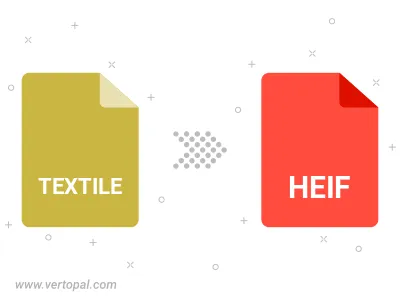Convert TEXTILE to HEIF
Convert TEXTILE markup documents to HEIF format, edit and optimize documents online and free.

The TEXTILE file extension, an acronym for Textile Markup Language, is a lightweight markup language developed by Dean Allen in 2002. It converts plain text into structured HTML, making it useful for writing articles, forum posts, and documentation. Textile is known for its simplicity and readability, and it has influenced the development of other markup languages like Markdown.
The High Efficiency Image File Format (HEIF) is a modern image format designed for superior compression efficiency and enhanced image quality. Originating in 2015, HEIF was developed by the Moving Picture Experts Group (MPEG) and utilizes the High Efficiency Video Coding (HEVC) codec to store image data. It supports a wide range of multimedia applications, including single images, image sequences, auxiliary image items, and non-image items, making it highly versatile for professional and consumer usage in various devices and platforms. Its ability to maintain high image quality while reducing file size significantly improves storage efficiency and accelerates data transmission.
Choose the TEXTILE markup document you wish to convert.
Before clicking the Convert button, use any available TEXTILE to HEIF tools.
Wait a few moments for the converter to complete its job, then download your HEIF file.

To change TEXTILE format to HEIF, upload your TEXTILE file to proceed to the preview page. Use any available tools if you want to edit and manipulate your TEXTILE file. Click on the convert button and wait for the convert to complete. Download the converted HEIF file afterward.
Follow steps below if you have installed Vertopal CLI on your macOS system.
cd to TEXTILE file location or include path to your input file.Follow steps below if you have installed Vertopal CLI on your Windows system.
cd to TEXTILE file location or include path to your input file.Follow steps below if you have installed Vertopal CLI on your Linux system.
cd to TEXTILE file location or include path to your input file.